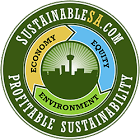The huge challenges and opportunities of the Circular Economy – Fortune
If we carry on using the Earth’s resources at the current rate of increase, we’ll need three planets by 2050. But rethinking the way we organize global production and consumption, and the new technologies and business models required, present one of the biggest business opportunities of the next decade.
The core challenge for the global economy is to decouple economic growth from resource constraints. If nothing is done to address the current situation, total demand for constrained resource stocks (like biomass, fossil energy, and many metals) is expected to reach 130 billion tons by 2050. That’s up from 50 billion in 2014. Even with an optimistic forecast for technological innovation, the economy is unlikely to be able to produce more than 80 billion tons, leaving a shortfall of around 40 billion tons by 2050. Such shortages will expose countries and companies to significant risks. That’s where the circular economy comes into play.
The idea behind the Circular Economy is a simple one: keep resources at their highest possible level of value at all times, eliminate the very idea of waste and leave ‘enough for all forever.’ Waste in this context is broader than physical rubbish. It also refers to product end-of-life as well as the enormous under-utilization of products and assets in markets. For example, a discarded product that is not recycled is a waste, but so is ending the working life of a product prematurely or letting it sit idle. A typical car, for example, is used only 5% to 10% of the time and as much as 80% of the things stored in a typical home are used only once a month.
via The huge challenges and opportunities of the Circular Economy – Fortune.


Comments
The huge challenges and opportunities of the Circular Economy – Fortune — No Comments
HTML tags allowed in your comment: <a href="" title=""> <abbr title=""> <acronym title=""> <b> <blockquote cite=""> <cite> <code> <del datetime=""> <em> <i> <q cite=""> <s> <strike> <strong>